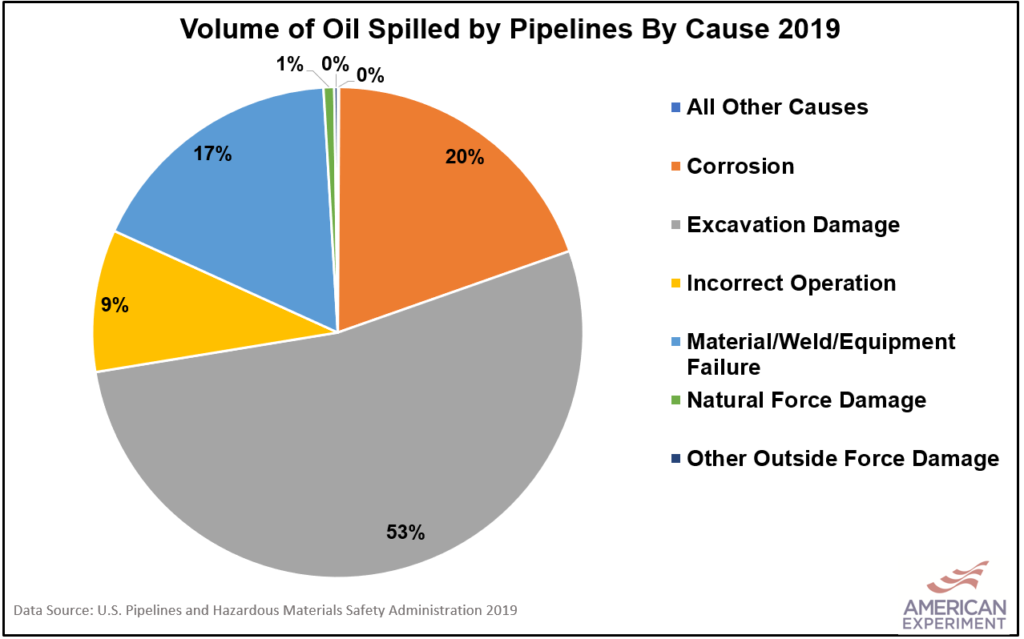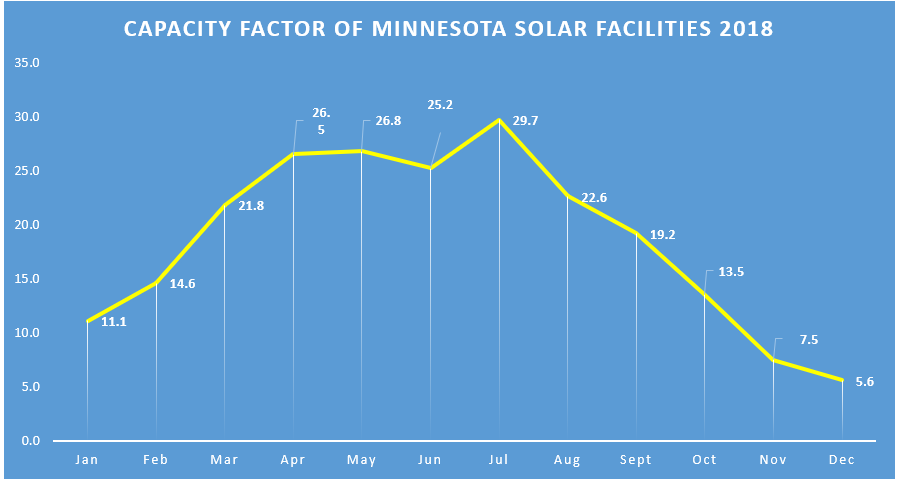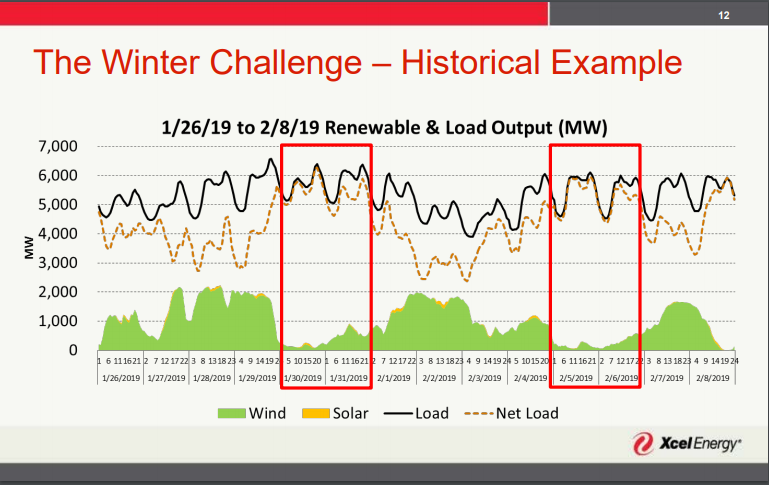Line 3 Opponent, Winona LaDuke, Unhinged on Almanac
Last week, the Minnesota Department of Natural Resources and the Pollution Control Agency approved permits for the Line 3 oil pipeline operated by Enbridge. As we have noted many times, the current Line 3 is corroded and operating at half capacity to reduce the risk of an oil spill, and replacing this project is the right thing to do for the environment and Minnesota’s economy.
However, not everyone sees it this way.
On Almanac last week, anti-pipeline activist and executive director of Honor the Earth, Winona LaDuke, made several statements that were factually inaccurate and she even called the pipeline the ecological equivalent of Auschwitz. You can watch the entire interview below.
https://player.pbs.org/162232bb-7086-4ee6-8329-0bc06e59e92b
Simply put, LaDuke’s hyperbole comparing the construction of a new pipeline to Auschwitz is disrespectful to the men and women who make a living making sure our homes are heated and we have the fuel we need to get from Point A to Point B. What is also disrespectful is LaDuke’s disregard for the facts pertaining to the safety of a new pipeline.
We have provided substantive rebuttals to several of LaDuke’s inaccurate claims below.
Wouldn’t a New Pipeline Be Safer?
When asked why a newer pipeline would be safer than an old pipeline, LaDuke did not actually answer the question. Instead, she said that Enbridge has cut the amount of oil transported by Line 3, but also increased throughput in other lines. LaDuke does eventually say the line is deteriorating, but she then claims that if her children make a mess, they have to clean it up; they don’t get to make a new mess. This analogy is lacking, because Enbridge is seeking to replace the pipeline specifically to reduce the risk of making a mess in the first place.
A new pipeline would indeed be safer. The current Line 3 is corroded, and operating at half capacity to reduce the risk of an oil leak. According to data from the United States Pipelines and Hazardous Materials Safety Administration, corrosion was responsible for 20 percent of the volume of oil spilled from pipelines in 2019.
Just like cars today are safer than cars from the 1960’s, so too are new pipelines that use new technology to maximize efficiency while minimizing the risk to the environment. Replacing the pipeline is the best thing we can do to prevent making a mess. The longer we delay the replacement of the pipeline the higher the risk of an oil spill.

“We Don’t Need the Oil”
During her comments, LaDuke argues that Enbridge and Minnesota don’t need the oil, which we have argued is inaccurate.
According to U.S. Energy Information Administration data, oil is the single-largest source of energy used in Minnesota, and natural gas, which is also moved by pipelines, is the second-largest source. These energy sources account for 33 percent and 28 percent of all the energy used by Minnesotans in 2018, respectively, as you can see in the graph below. Oil accounts for 6.6 times more energy than wind, and 33 times more energy than solar.

Importantly, oil is more useful than wind and solar because it can be used whenever we need it, whereas we can only use wind or solar when the weather is cooperating.
Switching to Solar is No Easy Task
In her response, LaDuke talks about the 240 kilowatt solar installation constructed by the Red Lake Nation as a reason why our state should focus on renewables instead of oil. However, it appears that LaDuke is not aware of how little energy this installation would produce.
Solar power in Minnesota is quite inefficient. U.S. EIA data show solar panels only produce about 18 percent of their potential output (denoted by the term “capacity factor”), with panels generating more electricity in the summer, and less electricity during winter.

During the summer when the panels operate best, these panels could be expected to generate the equivalent electricity consumption of 68 homes on a daily basis. In the winter, these panels produce only enough electricity for about 13 homes.
Challenges of a Green Grid
Speaking in terms of “equivalent electricity” production is also problematic because it does not tell the whole story of energy. It is not currently possible to store electricity generated by solar panels during the day for later use, unless people invest in expensive battery storage systems. As a result, any local government that installs solar panels is still reliant upon the grid for most of the day. California learned this lesson the hard way.
In August, millions of Californians suffered from rolling blackouts because the state has become too reliant upon wind turbines and solar panels for their electricity generation. When the sun wasn’t shining and the wind wasn’t blowing, the power went out.
Ignoring the importance of oil and natural gas to our lives in Minnesota would put people’s lives at jeopardy, as it was too cold for wind turbines to operate during the Polar Vortex of 2019 and Xcel Energy’s solar panels were covered in snow. Advocating for policies that would result in rolling blackouts during the winter months is much more irresponsible than the language LaDuke uses to characterize the workers on the pipeline.

Low Oil Prices
During her comments, LaDuke states that oil prices are -$38 per barrel because we no longer need oil. While oil prices were negative earlier during the pandemic, oil prices in the United States have rebounded to approximately $40 per barrel. Negative oil prices were always likely to be a temporary phenomenon based on the unprecedented effect economy-wide shutdowns had on oil consumption, and therefore this line of reasoning is flimsy, at best.
As Many Emissions as 50 Coal-Fired Power Plants
LaDuke argued that an expanded Line 3 pipeline would be the carbon dioxide (CO2) equivalent of building 50 new coal plants in Minnesota, but her figure is wrong.
Expanding the Line 3 pipeline would increase the volume of oil transported by 370,000 barrels per day, or approximately 135 million barrels per year. The U.S. Environmental Protection Agency states one barrel of oil contains 0.43 metric tons of CO2, and a study in Nature Communications estimates another 0.25 metric tons are emitted for each barrel of Canadian crude produced, for a total of 0.68 metric tons per barrel.
Therefore, CO2 emissions from the expanded pipeline would be roughly 91.9 million metric tons per year.
Generating electricity with coal produces approximately 1.07 metric tons of CO2 per megawatt hour, according to U.S. Energy Information Administration data. Minnesota has three sizeable coal plants, the Sherburne County (Sherco) plant, the Boswell Energy Center, and the A.S. King plant. These plants produced roughly 13.3 million metric tons, 7.7 million metric tons, and 2.9 million metric tons of CO2 in 2018, respectively.
Therefore, the expanded pipeline would produce as much CO2 as 7.4 Sherco’s, 12.6 Boswell’s, and 34 A.S. Kings. This is far fewer coal plants than the shrill cry of 50 new coal plants running continuously.
Conclusion
Our system of government works best when competing viewpoints are expressed, but LaDuke’s lack of concern to the facts on the ground, in addition to her comparison of building a pipeline to a Nazi deathcamp, should be enough for serious news outlets like Almanac to remove her from consideration as a guest on the program.
The silver lining to this interview is that the general public had an opportunity to see how unhinged many pipeline opponents, like LaDuke, are and what little regard they have for the objective reality on the ground.